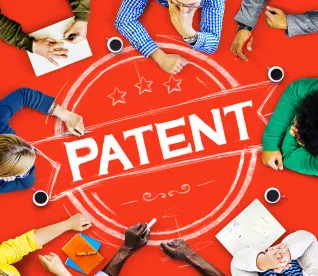On July 17, 2017, the Federal Circuit issued a precedential decision heavily criticizing the district court’s obviousness analysis invalidating U.S. Patent No. 7,713,446, directed toward a product for the treatment of oncology disease.
In Millennium Pharmaceuticals, Inc., v. Sandoz, Inc., a Hatch-Waxman litigation, the Federal Circuit reversed the United States District Court for the District of Delaware’s finding of invalidity and vacated judgment that was entered based on collateral estoppel. Nos. 2016-2066, 2016-1008, 2016-1009, 2016-1010, 2016-1109, 2016-1110, 2016-1283, 2016-1762, slip op. at 3 (Fed. Cir. July 17, 2017). The Federal Circuit held that the district court clearly erred in a number of its legal conclusions in its determination of obviousness under 35 U.S.C. § 103.
First, the Federal Circuit found that there was no teaching or suggestion in the prior art to produce the claimed invention. Specifically, the court noted that the “question is whether a person of ordinary skill, seeking to remedy the known [problems in the art] and to produce an efficacious formulation of [the drug] would obviously produce [the claimed invention], a previously unknown compound,” where the “prior art contains no teaching or suggestion of this new compound, or that it would form during [the known method of drug formulation].” Id. at 10. In light of the above, the Federal Circuit concluded that “the district court clearly erred in its obviousness analysis.” Id. at 11.
The Federal Circuit also concluded that the prior art references taught away from the claimed invention. The court noted that a person of skill in the art, upon reading the prior art references, would have found the process to create the drug “unattractive . . . for fear of disturbing the chemical properties” of the compound. Id. at 15. Thus, “a person of ordinary skill in the art would have avoided” the patented approach. Id.
The Federal Circuit further rejected the district court’s reliance on inherency. The court criticized the district court’s finding that the patented compound was the “natural result” of the known process of making the compound. The Federal Circuit emphasized that “[t]he inventor’s own path itself never leads to a conclusion of obviousness; that is hindsight.” Id. at 16. Based on the fact that none of the “expert[s] testified that they foresaw, or expected, or would have intended, the reaction between [two of the compounds], or that the result[] would have the long-sought properties and advantages” the district court clearly erred in its consideration of inherency. Id. at 17.
Finally, the Federal Circuit also criticized the district court for failing to consider objective indicia of non-obviousness, including yielding unexpected results and long-felt need. The Court held that the “unexpected properties of an unexpectedly produced new compound, and the ensuing pharmaceutical efficacy and benefit, negate the district court’s ruling of obviousness.”
Other Notable Decisions
NobelBiz, Inc. v. Global Connect, L.L.C. et al., Nos. 2016-1104, 2016-1105 (Fed. Cir. July 19, 2017) (non-precedential): In NobelBiz, the Federal Circuit found the district court erred in its claim construction, reversed the jury’s finding of infringement, and remanded the case. During claim construction, the parties asked the district court to construe several claims terms. “After briefing and oral argument, the district court found that all three terms should be given their plain an ordinary meanings,” and during the jury trial, each party’s experts “testified about the meaning of these terms.” The Federal Circuit concluded that “[a]llowing the experts to make arguments to the jury about claim scope was erroneous,” noting the “district court had the responsibility to determine the scope of the asserted claims.” Where “the parties dispute[] not the meaning of the words themselves, but the scope that should be encompassed by th[e] claim language,” the district court “must provide a construction.”




 />i
/>i

